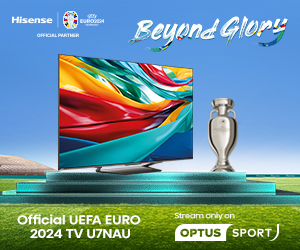HDMI cables are not all the same. Which one do you need? (AV guide)

If you did not know, all HDMI cables are not the same. Using the wrong version will reduce your audio and video experience.
HDMI cable standards are
- 1.4 is 10Gbps and for 1080p or lower – not for 4K.
- ‘High Speed’ can be pushed to 4K@30Hz with lossy compression. If you want to play Blu-Ray or Dolby Atmos content, forget these.
- 2.0 Premium High Speed’ 18Gbps for 4K@60Hz – supports Dolby Vision and Dolby Atmos with some compression, a good all-rounder
- 2.1 ‘Ultra-High-Speed’ 48Gbps, 4K@120Hz and 8K with no compression. Backwards compatible and what you should buy.
- 2.1a yet to be ratified

If you can’t find any marking on the HDMI cable (either the plug or the cable itself), you can be sure it won’t transmit 4K properly. The best idea is to throw these away – they are useless in a 4K world.
It is not just the cable but also about what you connect to it – the TV, soundbar and more. These have HDMI ports, but if you plug a version 1.4 cable into a Version 2.1 port, you will get 720/1080p transfer rates.
If you have a Dolby Vision/Dolby Atmos 4/8K TV, soundbar, Xbox X, PS5 or some higher-end streaming devices, you need HDMI 2.1 Ultra-high-speed 48Gbps cables.
HDMI Cables for 4K, Dolby Vision, Dolby Atmos or more
- Higher video resolutions, including 8K@60Hz and 4K@120Hz for immersive viewing and smooth fast-action detail. More Info
- Dynamic HDR (HDR10/+, Dolby Vision/IQ) ensures every moment of a video is at its ideal values for depth, detail, brightness, contrast and wider colour gamut—on a scene-by-scene or even a frame-by-frame basis. More Info
- 48G bandwidth for uncompressed HDMI 2.1 feature support. It is backwards compatible, but HDMI 2.0 or earlier cables are not forwards compatible. More Info
- HDMI 2.1 eARC simplifies connectivity, provides greater ease of use, supports the most audio formats and highest audio quality (high-bitrate audio formats include DTS Master, DTS:X, Dolby TrueHD, Dolby Atmos and more). It ensures full compatibility between audio devices and upcoming products. More Info
- FRL (Fixed Rate Link) is a signalling technology supported only in HDMI 2.1. It is necessary to achieve higher uncompressed resolutions such as those above 4K@60Hz and the ultra-high-speed bandwidths up to 48Gbps.
- Enhanced gaming features ensure an added level of smooth and seamless motion and transitions for gaming, movies and video. More Info They include:
- Variable Refresh Rate (VRR) reduces or eliminates lag, stutter and frame tearing for more fluid and better detailed gameplay. More Info
- Auto Low Latency Mode (ALLM) allows the ideal latency setting for smooth, lag-free and uninterrupted viewing and interactivity. More Info
- Quick Frame Transport (QFT) reduces latency for smoother no-lag gaming and real-time interactive virtual reality. More Info
- Quick Media Switching (QMS) for movies and video eliminates the delay resulting in blank screens before content shows. More Info
- HDMI Cable Power enables active HDMI Cables to get power from the HDMI Connector without attaching a separate power cable. This makes connecting and using active HDMI Cables as easy as passive wired HDMI Cables. More Info
List of 2021 HDMI 2.1 TVs
Some 2019 and 2020 TVs claim eARC but are just 2.0 ports.
- LG B1, C1, G1 and Z1 OLED, Mini-LED QNED90/91/95/99, range, and LG Nano 85/09//95/99
- Sony A80J, A85J A90J Bravia and X90J OLED
- Samsung (HDR10+ – no Dolby Vision support) QN85A, QN90A, QN91A, QN95A, QN800A, QN900A, Q80A, Q70A, The Frame
- Hisense U90G 8K Mini-LED, U9G 4K Mini-LED, and U80G 8K ULED
- TCL X728/825/925-series








